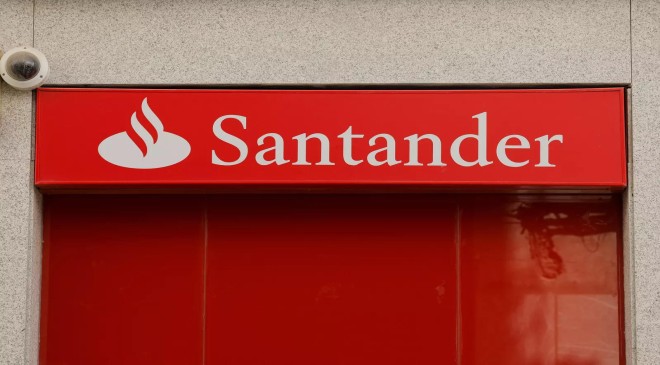In the past month, Santander has announced two drastic interest rate rises across its savings accounts. Notably, the first was in response to a decision made by the Bank of England earlier in November while the second saw massive changes to the rates of the bank’s current accounts. With many families struggling with the cost of living, Britons will be looking for accounts with strong interest rates which can provide decent returns despite the economic downturn.
Santander has confirmed that it will be increasing the in-credit interest rate on its 1I2I3, Select and Private Current Accounts. This will be the fifth time this year the bank has opted to do this.
With this decision, the accounts will rise from 1.50 percent AER/1.49 percent gross (variable) to 1.75 percent AER/ 1.74 percent. AER/gross (variable). This will be applicable on balances up to £20,000.
This boosted interest rate will automatically apply on current accounts from November 8, 2022. Following the bank’s decision, Santander’s current account customers can now earn up to £347.22 in interest per year.
Furthermore, any cashback customers earn on selected household bills will be paid by direct debit. Savers can also continue to access preferential rates on other products from the bank via 1I2I3 World.
The UK is currently in the midst of a cost of living crisis which is being caused by rising energy bills and inflation. Last month’s Consumer Price Index (CPI) rate of inflation reached 11.1 percent, placing further pressure on households.
To mitigate the damage caused by inflation on people’s savings, the Bank of England has consecutively raised the UK’s base rate in recent months. This is the charge from the central bank on other banks and other lenders when they borrow money.
Earlier this month, the Bank of England’s Monetary Policy Committee (MPC) voted in favour of a rate of three percent. In response, various banks and building societies have passed this on to their products.
Following the central bank’s decision to raise the nation’s base, Santander confirmed it would hike rates across the bank’s range of savings and mortgage products to better support its customers.
As of November 2, the financial institution’s Junior ISA saw its interest rate increase from 1.50 percent to two percent. From December 2, Santander will raise the rate on accounts paying 0.2 percent to 0.40 percent.
This will include the bank’s Everyday Saver, Instant Saver, ISA Saver and Easy ISA accounts. Notably, Santander made the decision to raise rates for those looking to enter the property market or begin saving for the first time.
The banks’ Flexible Saver for Kids Account will see its interest rate rise from 0.85 percent to 1.25 percent. On top of this, the First Home Saver Account from Santander will rise to 1.65 percent, while the Help to Buy ISA will also jump to 1.65 percent.
While the UK is expecting inflation to continue hurting savings for the foreseeable future, the pending recession is likely to bring it down dramatically. Experts are warning Britons to financially prepare for the likelihood of a full-blown recession.
Lucinda O’Brien, a savings expert at money.co.uk, shared why savers should be making their money “recession-proof” despite inflation continuing to diminish returns for many people across the country.
She explained: “Many people choose to save or invest their money to protect their wealth. However, you should consider your savings goals before you choose a savings product to ensure you’re getting the most from it.
“For short-term savings, you might want a savings account where your money is easily accessible, such as an instant access savings account or a cash ISA.
“If you’re thinking more long-term, such as saving for retirement or a major life purchase such as a home, an investment ISA is a good option.
“If you’re unsure about how to go about your savings, it’s a good idea to consult a financial advisor before you make any decisions. Making your money recession-proof can be a difficult task.
“The key thing to remember is to not panic and make impulse decisions. Take the time to carefully review your financial situation: your income, your outgoings and assets you might own, as this will be key in understanding how best to recession-proof your money.”



































